| Designation: | T-55AGM |
 |
|---|---|---|
| Manufacturer: | Kharkiv Morozov Machine Building Design Bureau - KMDB | |
| Product type: | Armoured Vehicles | |
| Name: | Modernization of the vehicle |
The T-55AGM tank is a version of modernisation of T-54, T-55, T-59 and T-62 tanks.
In order to enhance all its main combat, technical and operational characteristics, it is fitted with the following:
- Power pack with 5TDFM engine
- Improved running gear
- Automated movement control system with a steering handlebar control
- Additional passive protection, built-in explosive reactive armour, optronic countermeasures system, and new fire suppression system
- Up-to-date fire control system with over-ride facilities at the commander's station
- Automatic loader
- Anti-aircraft machine gun that can be aimed and fired from within the turret under complete armour protection
- New gun (its calibre can be 125 mm or 120 mm according to Customer's request).
WEAPONS
In order to increase the firepower of the T-55AGM tank, modernisation of the fighting compartment is offered. The modernisation consists in installation of a 125 mm KBM1 smoothbore gun or 120 mm KBM2 smoothbore gun, coaxial machine gun, and automatic loader located in an armoured compartment in the turret bustle.
The offered 120 mm smoothbore gun (KBM2) is a re-designed KBM1 gun and meets the requirements of NATO standards.
Use of enhanced performance conventional ammunition and barrel-launched guided missiles makes it possible to defeat modern tanks by means of armour-piercing projectiles at distances of 2000-3000 m and by means of guided missiles at distances of up to 5,000 m.
The upgraded T-55AGM tank is fitted with an up-to-date weapon-and-fire control system, which enables the gunner and the commander to deliver fire at stationary and moving targets while the tank is stationary or moving, with a high first round hit probability.
The weapon-and-fire control system comprises gunner's 1K14 day/night sight, PTT-M thermal imaging sight with MATIS thermal camera developed by the SAGEM company, commander's PNK-4S observation and sighting system, PZU-7 anti-aitcraft sight, 1Ets29M anti-aircraft machine gun control system, LIO-V ballistic computer with input sensors, 2E42 armament stabiliser, and other devices.
The gunner's 1K14 day/night sight is provided with a two-axis stabilised line-of-sight, a built-in laser range-finder and a missile guidance capability (laser channel). The sight is also provided with an automatic compensation for gyro drift. The sight field-of-view has a magnification of x10.
The built-in laser range-finder makes it possible to measure target ranges up to 9990 m with accuracy of 10 metres. The measured range is displayed, together with ready-to-fire light and loaded ammunition type indication, in the lower part of the gunner's sight field-of-view.
The PTT-M thermal imaging sight consists of a gunner's optronic instrument, monitor and commander's control panel. The thermal imaging sight enables the gunner and the commander to detect targets and deliver fire (commander - in the override mode) at targets under almost all weather conditions at high distances and with a high accuracy (this ability is a big advantage when operating under conditions of poor visibility or at night). The thermal imaging sight also makes it possible to disregard a number of common obscurants, such as smoke, battlefield light bursts, etc.
The commander's PNK-4S observation and sighting system comprises a commander's TKN-4S combined day/night sight and a gun position sensor. The commander's TKN-4S combined sight is provided with a vertically-stabilised line-of-sight and three channels: unity vision day channel, magnified day channel with a degree of magnification of x7.6 and night channel with a degree of magnification of x5.8.
The anti-aircraft sight enables the commander to fire at air targets from the anti-aircraft machine gun from within the turret under complete armour protection.
The LIO-V ballistic computer is intended for computation of ballistic corrections. The computer automatically allows for the signals coming from the following sensors:
- tank speed sensor
- target angular speed sensor
- gun trunnion axis tilt sensor
- crosswind sensor
- target range sensor, and course angle sensor
Additionally, the following parameters are manually input for calculations:
- ambient air temperature
- charge temperature
- gun barrel wear
- ambient airpressure, etc.
Turret traverse is electric while gun elevation is hydraulic. Gun and turret manual controls are provided for emergency use.
The specific feature of the tank consists in availability of guided weapon system, which makes it possible to fire laser beam-riding guided missiles from the main gun and engage targets at distances of up to 5,000 m with a hit probability of at least 0.8. The guided weapon system also enables the tank crew to engage hovering helicopters that can fire at tanks from a distance exceeding the maximum firing range of conventional tank ammunition.
Guided missile can be fired from the moving tank at a moving target. The missile is provided with a tandem warhead to defeat targets protected by explosive reactive armour or modern composite armour with enhanced protection ability against chemical energy ammunition.
Machine gun can be fired either from the gunner's station or the commander's station.
The offered modernisation ensures the following:
For the gunner:
- increase of effective fire range by day and at night of up to 2,400-2,600 m while the tank is stationary or on the move
- increase of target detection range at night up to 8,000 m due to installation of PTT-M thermal imaging sight
- reduction of the first shot preparation time down to 5-8 seconds
- target ranging by day of up to 5,000 m with probability of 0.9 de to use of a laser range-finder provided with an amplitude-time selection capability
- firing a guided missile at distances of up to 5,000 m with a target hit probability of 0.8
For the gunner:
- firing the main gun in the over-ride mode on the move by using the TKN-4S sight at targets at distances of up to 1,700 m and firing the coaxial macjhine gun at targets at distances of up to 1,800 m
- firing in the over-ride mode by using the thermal imaging sight monitor at distances of up to 2,400-2,600 m
- firing the anti-aircraft machine gun on the move from within the turret under complete armour protection at distances of up to 2,000 m at ground targets and low-flying air targets
- increase of target detection range:
- by day - up to 5,000 m
- at night - up to 700 m (by using TKN-4S sight); 8,000 m (by using PTT-M thermal imaging sight)
- high-accuracy target designation to the gunner
The upgraded T-55AGM tank is fitted with communications means, which include:
- an ultra-short wave R-173M radio set
- crew intercom system
Power pack with 5TDFM engine
The power pack that is offered for installation in the upgraded tanks, is based on the 5TDFM engine developing 850 hp. This power pack is designed and made as a separate module that is to be welded instead of the cut-out rear part of the hull.
The engine is a two-stroke multi-fuel diesel with direct flow scavenging, liquid-type cooling, horizontal cylinders and boxing pistons. The engine can burn various types of fuel including diesel fuel, petrol, kerosene, jet engine fuel or their mixture in any proportion.
Power is taken from both sides of the crankshaft. The engine is mounted by means of two cylindrical supports (which are coaxial with the power take-off shaft and are located at the ends of the engine) and a front support (which is located on the lower surface of the engine). This way of engine mounting requires no adjustment nor centering when installing the engine in the power pack (while both adjustment and centering are required in the standard version of the tank).
The main distinctive features of the power pack with 5TDFM engine include the following:
- ejector-type cooling system
- high-efficiency air cleaning system of the engine
- special air inlet device enabling the tank to ford to a water depth of 1.8 m and high air/water tightness of the power pack compartment.
The cooling system is of liquid type, closed, forced, ejector-type. The ejector of the cooling system is operated by using the engine exhaust gas. Absence of a fan and drive reducer made it possible to considerably decrease the weight of the cooling system as well as ensuring a high level of reliability and self-control and enabling the tank to operate at high ambient temperatures without any degradation of performance.
The high-efficiency cyclone-cassette air cleaner provides purification of air from dust up to 99.8 %.
The modernisation results in the following:
- increase of average speed on natural soil road of up to 22%
- ability to operate at ambient air temperatures of up to + 55 degrees Centigrade
- ability to operate under dust conditions for 35 hours or 1000 km without the need for air cleaner cassette maintenance
- ability to ford to a water depth of 1.8 m without preparation
Protection
Additional protection package for T-55AGM tank
The additional protection package is intended to increase the level of protection of the tank against chemical energy attack as well as kinetic energy attack (APFSDS) with the minimum possible increase of tank weight.
The additional protection package consists of passive armour protection and explosive reactive armour.
The tank hull nose is fitted with a removable module. The hull sides are fitted with armoured skirting plates as well as rubberised fabric skirts.
The outer perimeter of the front and side parts of the turret is fitted with module sections while the turret roof is fitted with containers of the explosive reactive armour array.
Each section and each container contain explosive components of explosive reactive armour of new generation, designated Nozh.
The protective action of the explosive reactive armour against a chemical energy attack consists in destruction, crushing and changing the direction of the high-energy jet due to action of the explosive reactive armour fragments and products of detonation of the explosive that is stored inside the explosive reactive armour component and is initiated by the high-energy jet.
The protective action of the explosive reactive armour against a kinetic energy attack projectile consists in destruction of the projectile body and changing of the direction of its penetration due to action of the products of detonation of the explosive that is stored inside the explosive reactive armour component and is initiated by the kinetic energy of the projectile.
Installation of the explosive reactive armour increases the level of protection of the T-55AGM tank as follows:
- against chemical energy attack - by a factor of 2.3-2.6
- against kinetic energy attack - by a factor of 3.5-4.3
The explosive reactive armour components do not detonate when hit by small arms bullets (7.62 mm and 12.7 mm in calibre) or automatic cannon rounds (up to 30 mm in calibre). Nor do they detonate when exposed to action of incendiary substances of Napalm type or destructive effects of volumetric explosions.
Dazzle coating of the external surfaces of the tank makes it less liable to be detected in the visible and near-infrared ranges of spectre when the enemy is observing the terrain through optical devices, image intensification night vision devices or low-level television cameras.
The thermal insulation of the power pack compartment top deck makes the tank less liable to be detected by enemy thermal imaging systems or to be sensed by homing warheads of missiles (projectiles, mines) which find targets by using thermal contrast.
Aerosol screen laying system
In order to increase the protection of the T-55AGM tank, it is offered to fit it with an aerosol screen laying system.
The aerosol screen laying system is intended to decoy away anti-tank guided missiles that use semi-active laser-based homing warheads, as well as to create interference to artillery systems fitted with laser range-finders, by means of detecting laser irradiation, determining its direction and laying quick-to-generate aerosol screens.
The collective NBC protection system ensures protection of the crew and internal equipment against the effects of nuclear explosions, radioactive and toxic agents, as well as bacteriological agents.
The collective NBC protection system of the tank consists of the following:
- PRKhR-M radiation and chemical agent detector
- FVU filtering-and-ventilating unit
The PRKhR-M detector is intended for continuous checking, detection, warning and control of the actuating mechanisms of the protection devices:
- in case of powerful gamma-irradiation (nuclear explosion)
- in case of gamma-irradiation of radioactively contaminated terrain (with measuring the intensity of gamma-irradiation)
- in case of availability of enemy's toxic agents in the ambient air
The filtering-and-ventilating unit is intended to clean the outside air of toxic agents, radioactive dust and biological aerosols, to supply purified air into the crew compartment, to create overpressure in the crew compartment, and to ventilate the crew compartment in order to remove fire suppressing agents after suppressing a fire.
Fire suppression system
The fire suppression system is an automatic fire/explosion suppression system and meets the modern requirements.
The fire suppression system is intended to detect and suppress fires, to prevent the fuel/oil mixture from exploding due to action of the high energy jet in the crew and power pack compartments; to give commands for switching on ventilation, to remove pirolysis products out of the crew compartment so that the crew members will not get intoxicated by toxic agents.
This ystem differs from other systems in having a quick response in detecting and eliminating fires, a high reliability, simplicity and ease of maintenance.
The system can be activated as follows:
- automatically (when the vehicle mains is switched on)
- manually - by using the CR.C (crew compartment) button and EC (engine compartment) button which correspond to the relevant compartments
Response time:
- in the crew compartment - within 0.15 s
- in the power pack compartment - within 10 s.
The system can be activated twice before recharging.
|
||||||||||||||||||||||||||||||||||||||||||||||||||||||
Related Articles |
|
Trials of the Garant System Installed in the T-55AGM Battle Tank (20.12.2006) |
 |
 |
 |
 |
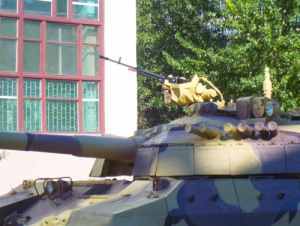 |
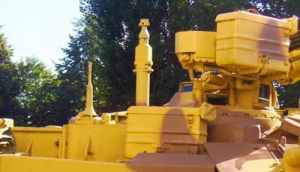 |
 |
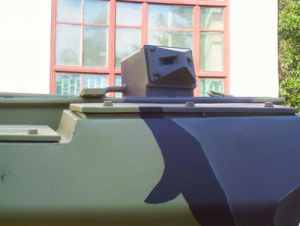 |
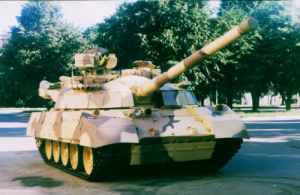 |
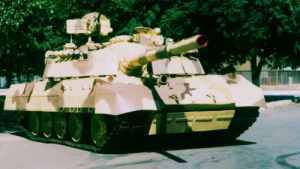 |
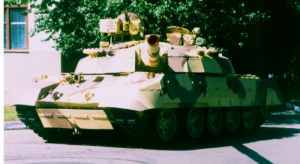 |
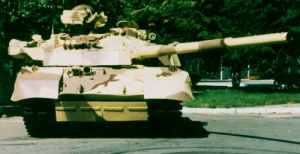 |
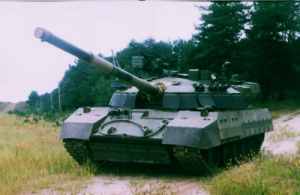 |
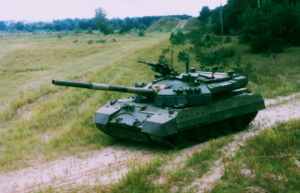 |
 |
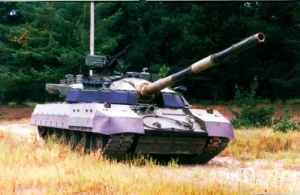 |
 |
 |
 |
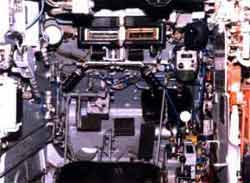 |
 |
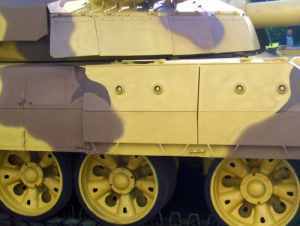 |
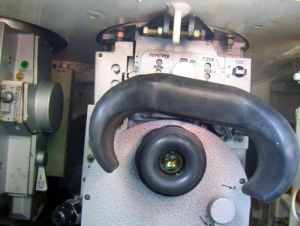 |
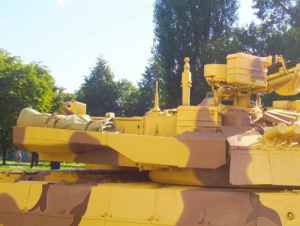 |
 |
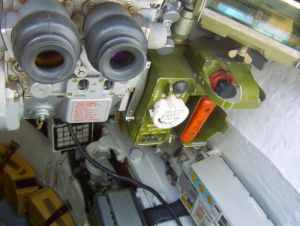 |
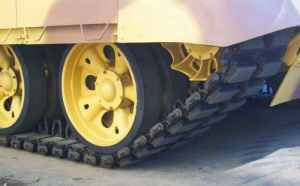 |
 |
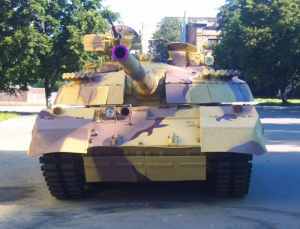 |
 |
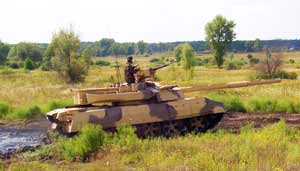 |
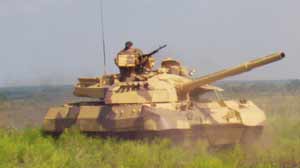 |
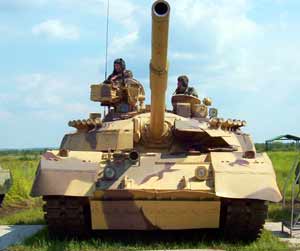 |
